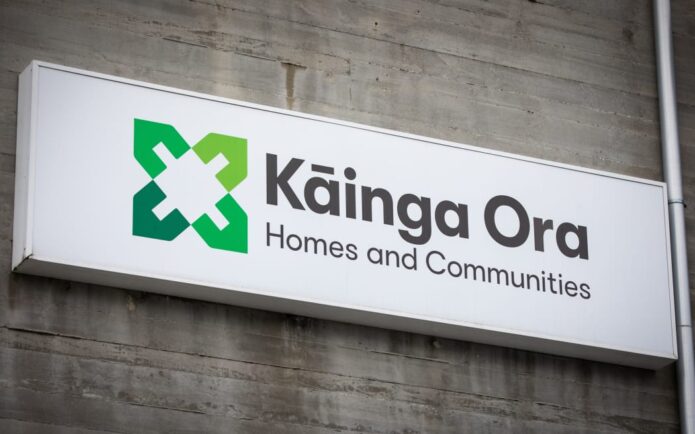PHOTO: The 40-hectare block for sale at Crescent Bay on the Tasman Peninsula. (Supplied: Kate Storey Realty)
Half of the plot of land bought by electronics millionaire Dick Smith to develop an eco-resort that neighbours a national park on the Tasman Peninsula has gone back up for sale, reigniting concern from locals, conservationists and the Indigenous community.
Key points:
- Dick Smith bought 80 hectares of land at Crescent Bay in 2008 with the plan to develop an eco-resort
- There has been stiff opposition from some locals and conservationists and those plans have been on hold
- Half the parcel of land is now up for sale but the other half still has an approved development application for luxury accommodation
The 40-hectare waterfront block on Crescent Bay borders the Tasman National Park, and some locals fear private developers will once again try to turn it into luxury accommodation.
The piece of land includes a walking track that connects to large sand dunes popular for “surfing” down and is about a 40-minute walk from Remarkable Cave.
The plot is half of the 80-hectare site Dick Smith bought in 2008.
The well-known entrepreneur lodged an application to build a luxury lodge on the site, which was approved by the council.
But after fierce opposition from locals and a lack of support from the state government, the project was abandoned.
In 2017, Mr Smith’s daughter and son-in-law revealed plans to revive the project.
The Tasmanian government committed $1 million to boost the proposed $20 million tourism development, but no work has since been done.
With half of the plot now listed for sale, a debate has been reignited over what should happen to the land.
Calls for government to buy the land
The Tasmanian National Parks Association (TNPA) says the land should be included in the Tasman National Park and that the state government should buy the land to make it happen.
“It’s one of the great short walks,” TNPA president Nick Sawyer said.
“If you choose to you can take to walk up to Mount Brown, or the easier walk down to Crescent Bay Beach.
“Many people who go there thinking they’re going to the Tasman National Park wouldn’t realise that the boundary actually stops basically at the top of those dunes.”
Nick Sawyer said the state government needed to step in and protect the bay.
“It would greatly increase the likelihood of that natural view and natural feel of Crescent Bay being maintained forever if it was actually incorporated into the Tasman National Park.”
At the time of the proposed development in 2008, investigations found the area to be of ecological significance.
The land includes a coastal dune system, woodlands and wetlands, as well as threatened flora and fauna, including the white-bellied sea eagle.
“There are a number of threatened species on that block of land, and that was identified during investigations for the Dick Smith proposal,” Mr Sawyer said.
“National Parks exist for basically two reasons. They’re for the protection of natural values and for people to experience nature.”
Private Crescent Bay sale ‘horrifying to think about’
Along with the natural significance of the site, the land also has a strong cultural significance to the Paredarerme Nation.
Historically, the local Aboriginal group lived and hunted on the Tasman Peninsula, which holds the traditional name Turrakana.
Secretary of the Parrdarrama Pungenna Aboriginal Corporation (PPAC) Elena MacDonald said it was upsetting that the land could be sold without consulting traditional custodians.
“Crescent Bay and the islands surrounding it, and the whole area including the dunes form a very critical part of our heritage and a very critical part of our country, which we cared for over thousands of years,” she said.
“Regardless of whether it was a private commercial sale or whether it was sold to developers, it would be threatening to the ongoing existence of that country, let alone our ability to access and care for it.”
READ MORE VIA ABC














